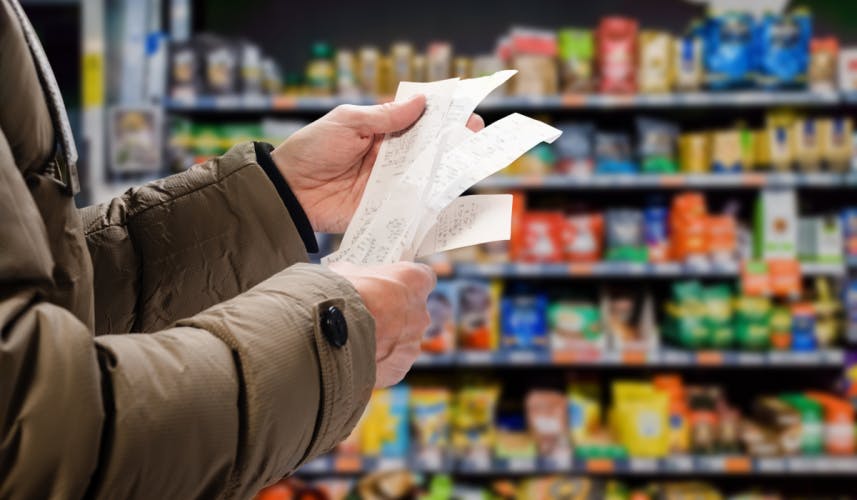[ad_1]
Inflation is on the rise all around the world. In the United States, the inflation rate hit 7.5% in January, the fastest pace in 40 years, but other major economies are suffering similar problems. U.K. inflation rose to 5.5% in January and is expected to reach 8% in the Spring. In the Eurozone, inflation stands above 5%—higher than at any time since the launch of the single currency. On the other side of the globe, prices are increasing more rapidly in both Australia and New Zealand.
Policymakers are hopeful some of this inflation will prove to be short-lived. They believe this bout is partly explained by disruption from the COVID-19 pandemic, with the world now struggling to cope with a surge in demand following the reopening of so many economies. That is driving the price of raw materials and energy higher. Logistics costs add to the pressure, with the world’s shipping and freight companies also trying to re-orient themselves in the wake of the pandemic.
However, not all economists are convinced by these arguments—and central banks such as the Bank of England are already conceding that inflation may last longer than initially expected. The war in Ukraine has the potential to cause further inflation problems, as we have already seen a sharp increase in oil prices.
Inevitably, against this backdrop, retailers’ prices are rising. In the U.K., for example, the retail consultant Kantar thinks the average family’s annual grocery bill will increase by around £180 this year as supermarkets and other retailers pass on their own rising costs. In Australia, retailer Coles has warned of the effects of inflation there too.

And the economic landscape is not the only pressure on supermarket prices. Other factors can also make a difference. For example, a study by the research firm Assosia points out that prices at the U.K. supermarkets Morrisons and Asda have risen more quickly than their rivals in recent months; both companies have recently been acquired by private equity investors, who may be shifting the businesses’ strategy on pricing.
For supermarkets’ suppliers, meanwhile, this bout of inflation poses some serious challenges. To put it bluntly, producers selling goods to supermarkets and other retailers are at risk of being caught in a squeeze. Their costs are rising too, but supermarkets are keen to keep their prices down wherever possible—they may try to force smaller suppliers to take the hit of rising costs.
Indeed, it is not only smaller suppliers that are coming under pressure. In the Netherlands, Albert Heijn— the largest Dutch supermarket chain—last year removed Nestlé products, including Maggi, KitKat, and Nescafé from its stores because of the price increases that Nestlé wanted to impose. If one of the world’s largest consumer packaged goods is struggling in this way, many smaller providers will be feeling nervous.
The reality of the retail sector is that consumer-facing businesses such as supermarkets are hyper-sensitive about pricing. In an inflationary environment, prices will rise, but retailers will do their best to protect customers, rather than their suppliers. Doing so is in their competitive interests.
Producers, faced with rising energy bills and higher raw materials costs, therefore need to think carefully about the year ahead. There are some hopes that the worst of the price increases in global foodstuffs are behind us, but there are no guarantees, and energy price inflation looks set to persist. For producers negotiating deals with retailers for the first time or as they renew supply contracts, that makes it very difficult to know what to agree to.
At the very least, it is vital that suppliers now have frank and open discussions with retailers. If you are concerned about cost increases to come, and the viability of your current pricing strategy, you must talk to your customers about these pressures rather than hoping they will go away. These are likely to be difficult conversations, but better that than tying yourself into a contract that could become loss-making.
One strategy employed by some product providers is to embrace the concept of “shrinkflation.” If you’re struggling to raise your prices, maybe you need to cut costs by reducing the size of your products. It is a tactic that a number of larger consumer goods producers have employed in recent months. It’s effectively a price rise, since you’re charging the same for a smaller amount of goods, but it’s a less obvious way to manage inflation.
This approach may feel unscrupulous or even dishonest, but there is no point pretending that inflation isn’t happening. And with a real lack of certainty about how this year will pan out, it is important for product providers to be cautious. The large supermarkets have deep pockets and will be able to ride out the storm; most small product providers have less room to maneuver.
[ad_2]
Source link





More Stories
How To Find A Cosmetic Surgeon For The Best Results
Cosmetic Surgery Procedures For the Face
Chic Clothing and Accessories at Pebbles – Pune Children’s Clothing Store